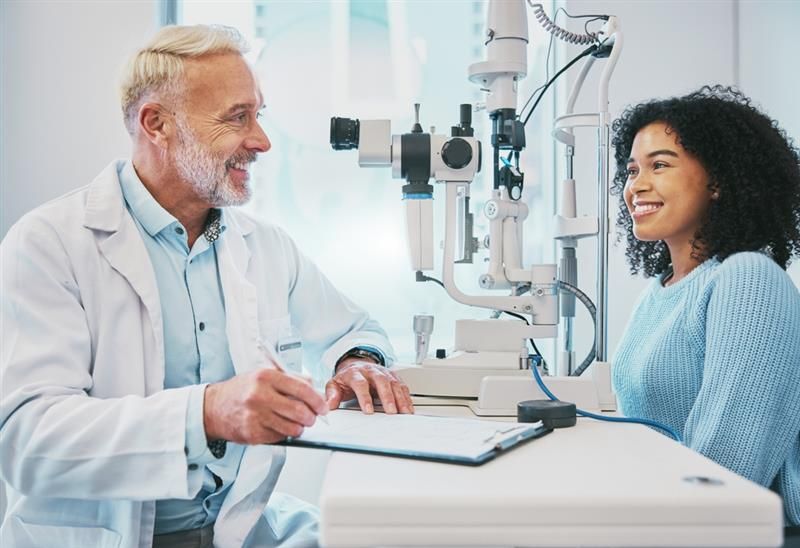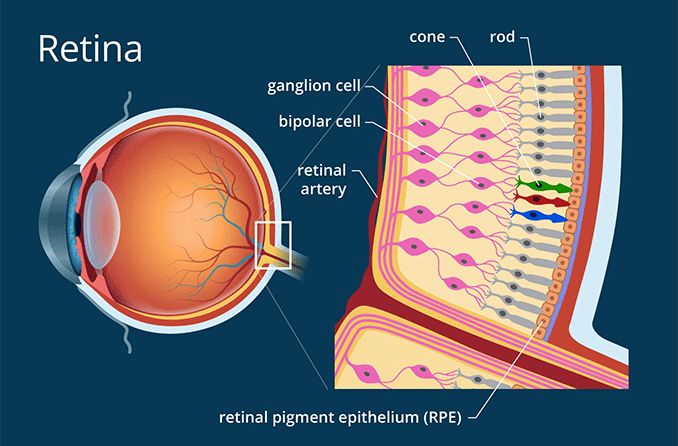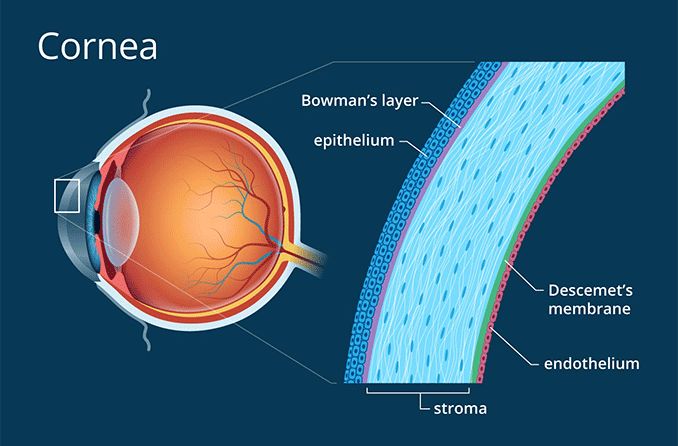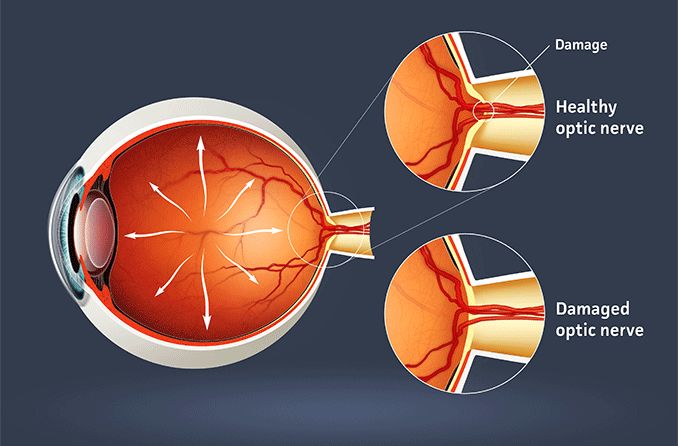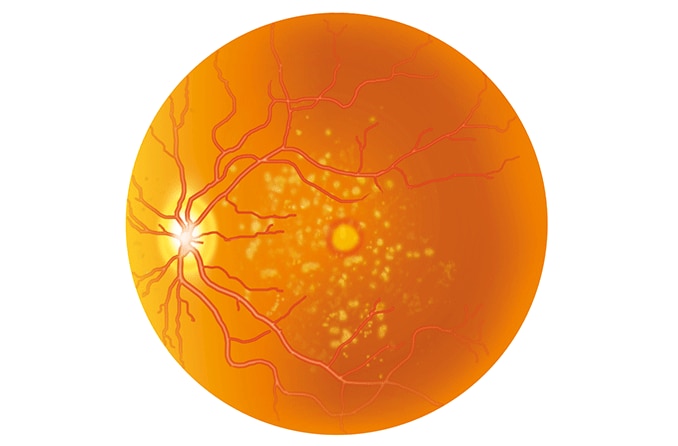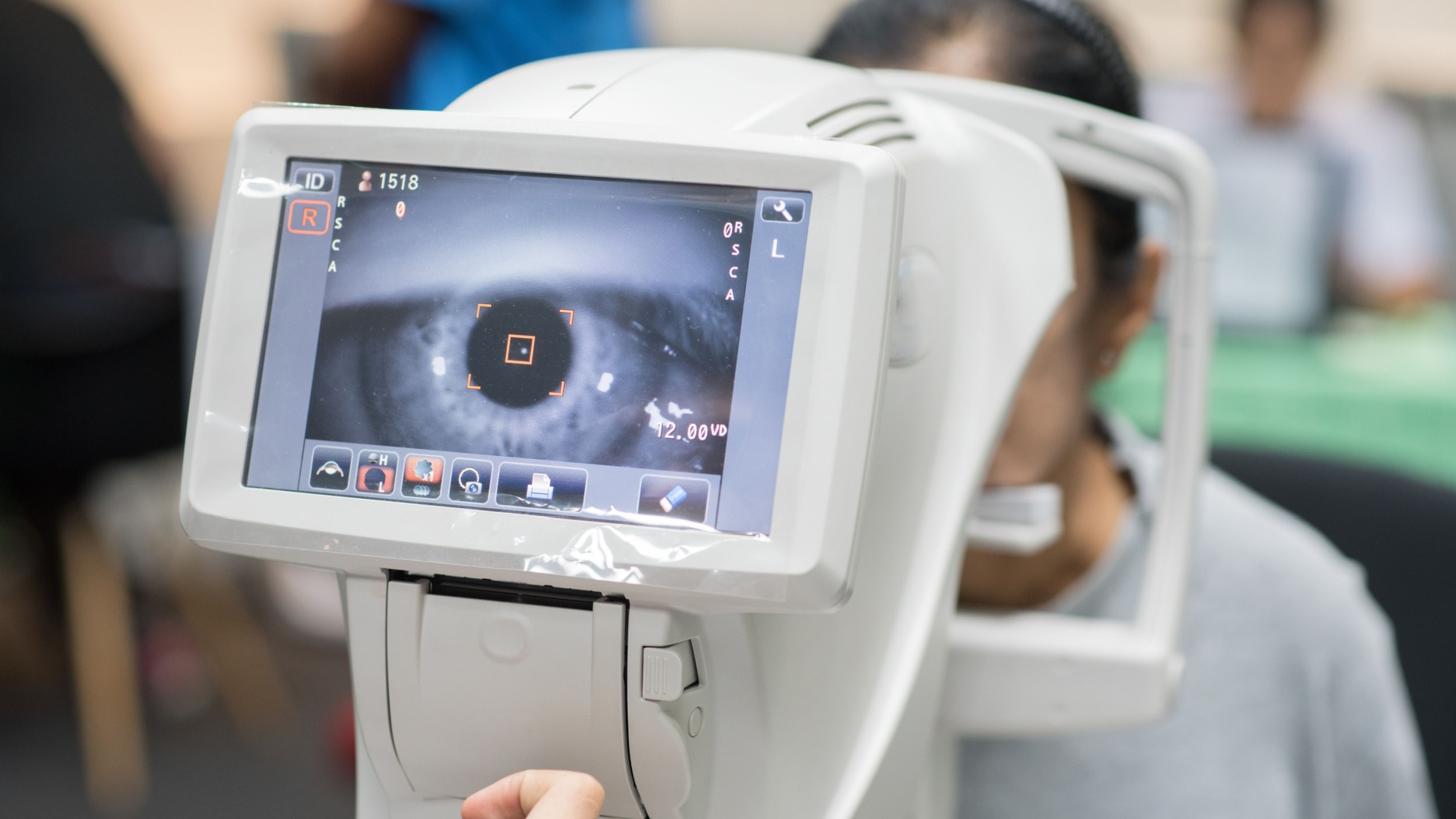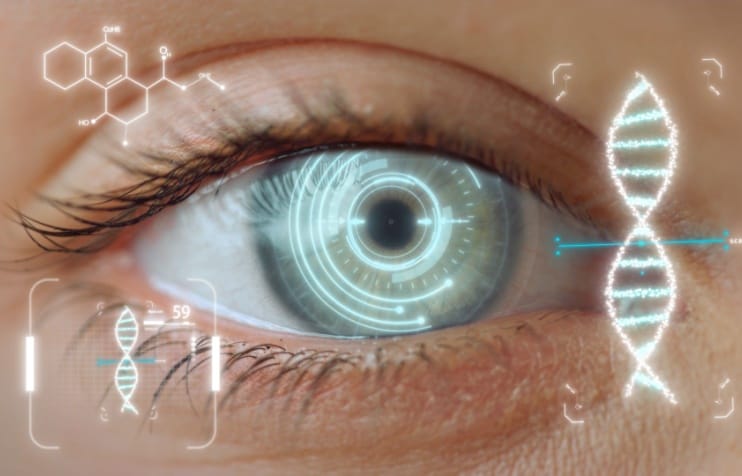Can stem cells bring back your vision?
Stem cells are special cells that can develop into many different cell types in the body. Stem cell therapy uses these cells to replace damaged or lost cells when diseases or injuries occur. Although it offers promise, there are currently no FDA-approved stem cell therapies for eye disease.
Scientists are working to ensure both the safety and effectiveness of this technology. While treatments remain experimental, early breakthroughs give researchers and patients reason for hope and optimism.
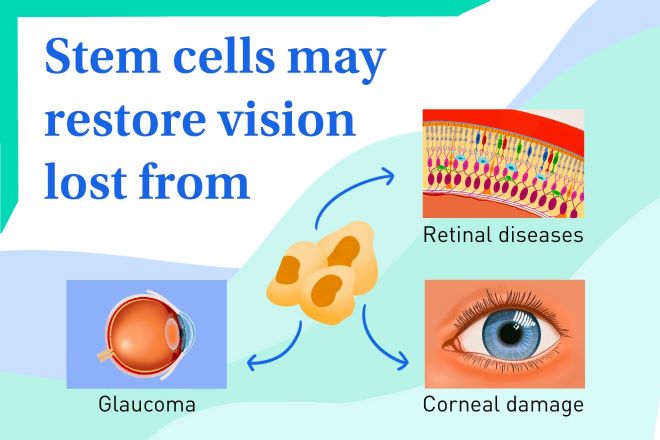
Retinal diseases
Stem cell therapy for vision often focuses on the retina. This is the light-sensitive tissue in the eye. This therapy often targets the photoreceptor cells, which detect light and convert it into signals for your brain. Therapies also target retinal pigment epithelial cells, which support retinal health. Retinal conditions that are currently being researched include:
- Age-related macular degeneration (AMD) – This disease causes central vision loss in older adults.
- Retinitis pigmentosa (RP) – This disease causes a gradual loss of night and peripheral vision and can lead to legal blindness.
- Stargardt disease – This disease causes progressive loss of central vision.
Corneal damage
The clear front layer of the eye, the cornea, can become damaged due to injury or disease. Doctors can transplant stem cells to help heal a damaged cornea. This may help improve sight, either fully or partially.
Glaucoma
The optic nerve sends signals from the eye to the brain. Glaucoma can damage this nerve, slowly causing loss of vision. Stem cell therapy research aims to protect the optic nerve and trabecular meshwork (where eye fluid drains).
What is stem cell therapy for vision?
Stem cells can turn into many types of cells in the body. Scientists are experimenting with stem cell therapy to help treat damaged structures in the eye. They do this by converting stem cells to the type of cell needed to restore function.
For instance, in macular degeneration, some retinal cells die. Scientists can guide stem cells to develop into new retinal cells and then transplant them into the eye. Stem cell treatments require special facilities, skilled experts and careful monitoring. The steps for stem cell therapy include:
- Collecting stem cells from tissue
- Growing the cells in a lab into specific cell types (such as retinal, corneal or optic nerve cells)
- Transplanting the cells into the patient
When doctors transplant stem cells into the patient’s eye, the hope is that these cells integrate and restore vision. Stem cell therapy can be expensive. As techniques improve and more treatments receive approval, costs may decrease.
Big wins with stem cells for eyes
Some studies indicate that stem cell therapy could be a breakthrough for patients with certain eye diseases.
Fixing the cornea
The cornea — the clear front layer of the eye — can be damaged by injuries, infections or disorders. A recent clinical trial tested a stem cell treatment called cultivated autologous limbal epithelial cells (CALEC). It was for people with severe corneal injuries that other treatments couldn’t fix. Doctors collected stem cells from a healthy eye. They grew more of these cells in the lab for two to three weeks. Then, they placed the new cells onto the damaged eye.
After 18 months, most patients had a fully or partly restored cornea. Many also had improved vision. The treatment was found to be safe with no serious side effects in any of the patients. This gives hope to people with corneal injuries that were once thought to be untreatable.
Helping macular degeneration
Age-related macular degeneration (AMD) destroys sharp, central vision as cells in the macula (the central part of the retina) break down. This condition affects millions of older adults worldwide and has limited treatment options.
The disease can cause waste material called drusen to build up under the retina. This buildup leads to stress and inflammation in the eye. Over time, these problems damage cells in the retina, especially the retinal pigment epithelium (RPE) cells. Without healthy RPE cells, photoreceptors die, causing vision loss.
Stem cell therapies target AMD by replacing damaged retinal pigment epithelium (RPE) or photoreceptor cells. Scientists are working on transplanting cells as patches behind the retina.
Researchers have made significant progress in using stem cells to repair damaged eye tissues and restore visual function.
Saving cells from glaucoma damage
Glaucoma damages the optic nerve, typically due to increased eye pressure, which can lead to permanent vision loss. Traditional treatments lower eye pressure, but they cannot fix nerve damage.
Stem cell therapy could help protect existing nerve cells. It may also aid in regrowing lost cells. Recent research is exploring various stem cell types to achieve this. These new methods may work alongside existing glaucoma treatments.
Helping with diabetic eye problems
Diabetic retinopathy harms blood vessels in the retina. This damage can cause vision issues and may result in blindness. Current treatments, such as laser therapy and injections, manage the condition. However, they don’t fix the underlying damage.
Stem cells may help repair damaged blood vessels and reduce inflammation. They can release growth factors and anti-inflammatory compounds. This may protect the retina from more damage.
Additionally, stem cell therapy might help detect early signs of diabetic eye problems. Researchers are studying how stem cell-derived retinal cells react to high glucose in the lab. This helps them understand disease mechanisms and find early intervention strategies.
How stem cells work in your eyes
Stem cells have the ability to turn into the specific cells your eye needs. They can also send signals that support healing.
What is the process?
Stem cell therapy involves several stages:
- Cell collection – Doctors take stem cells from eye tissue, bone marrow or another source.
- Lab growth – Cells multiply in controlled environments for several weeks.
- Specialization – Scientists add nutrients to turn stem cells into specific cells.
- Transplant – Surgeons inject or place cells into damaged areas.
Cells are grown in specialized laboratory conditions that guide them to become specific eye cell types. For example, to treat retinal diseases, stem cells might be directed to become photoreceptors or retinal pigment epithelium cells. For corneal issues, they may be developed into different types of cornea cells.
Types of stem cells
Stem cells come from various sources. Each type of stem cell has its advantages and disadvantages. They can be classified as:
Perinatal
The perinatal period spans pregnancy through some time after birth. These stem cells:
- Are collected from amniotic fluid or umbilical cord blood
- Can turn into several specialized cell types
Embryonic
This period is when embryos are a few days old. These stem cells:
- Can develop into any cell type in the body
- Can repair or replace damaged tissues
- Can be rejected after being transplanted
- Are subject to ethical questions
Adult stem cells
Adult stem cells exist throughout the body. These stem cells:
- Are found in small amounts in adult tissues, like the corneal limbus and bone marrow
- Can only become certain types of cells
Induced pluripotent stem cells (iPSCs)
iPSCs are made from adult cells in a lab. These stem cells:
- Are adult stem cells that have been converted to act like embryonic stem cells
- Avoid needing a donor
- Are in unlimited supply
- Are now common in stem cell research
- Are being studied for safety in people
Mesenchymal stem cells (MSCs)
MSCs come from various sources. These stem cells:
- Are helpful for tissue repair
- Can reduce inflammation
What’s new in stem cell eye research?
Stem cell eye research is advancing. New technology is focused on precise and efficient therapies.
Retinal patches for AMD
Researchers have created patches of retinal cells from stem cells. They can use these to treat conditions, such as AMD. These patches are placed in the eye to replace damaged tissue. Studies have found that retinal patches of stem cells survive better than some other methods.
Retinal progenitor cell research
Retinal progenitor cells are a type of special adult stem cell found in the retina. These cells do not replace lost or damaged retinal cells in the eye, but scientists have discovered how to stimulate them in the lab to grow new retinal cells. Researchers are exploring these cells as potential treatments for retinal diseases.
Cornea repair
New methods to grow and place limbal stem cells on the eye’s surface have been developed. Limbal stem cells are located at the edge of the cornea. They help keep the cornea healthy by producing new cells. This process replaces old or damaged cells. Limbal stem cell therapy has improved treatment for corneal injuries, diseases and chemical burns.
Why more studies are needed
These new discoveries hold promise for helping people with serious eye diseases. However, stem cell treatments for vision are still in the clinical trial phase. Doctors and scientists need to ensure these therapies are safe and effective.
Be careful with stem cell promises
Be careful with so-called “cures.” Some clinics offer stem cell treatments that lack scientific testing and regulatory approval. If you wish to enroll in a clinical trial for stem cell therapy, ensure it is legitimate. To identify safe treatment options, look for:
- Food and Drug Administration (FDA)-approved clinical trials listed on ClinicalTrials.gov
- University hospital research programs
Unverified treatments can be dangerous. They carry risks, such as tumor formation, pain and worsened vision problems. Red flags to avoid include:
- Clinics offering therapies without FDA approval
- Treatments costing thousands of dollars
- No proof of safety protocols
- Procedures done in non-medical settings
Always talk to your eye doctor first about potential stem cell treatments. They can offer guidance based on science, not claims.
The future of vision with stem cells
Stem cell research offers hope for individuals experiencing vision loss. These therapies go through strict testing in different clinical trial phases. Right now, there are no stem cell treatments for eye conditions with FDA approval. In the coming years, expect to see more clinical trials and better technologies, including:
- More sophisticated methods to grow specific eye cell types
- Faster growth methods producing cells
- Improved integration after transplantation
- Advanced imaging techniques to allow better tracking of transplanted cells
- Combination therapies using cells + gene editing
- Patient-derived iPSCs, which reduce the risk of rejection
Avoid stem cell-based therapies until they are tested for safety and effectiveness by:
- Verifying that a trial is legitimate
- Steering clear of unproven “cures”
- Following trusted sources, like the National Eye Institute
- Discussing all treatments with your eye doctor
For people facing vision loss, stem cell therapy offers genuine hope. Some conditions thought to be irreversible might one day have treatment options. These could stop progression and possibly restore lost vision. Talk to your physician if you want to learn more about stem cell therapy. They can share the latest treatment options for your condition.
